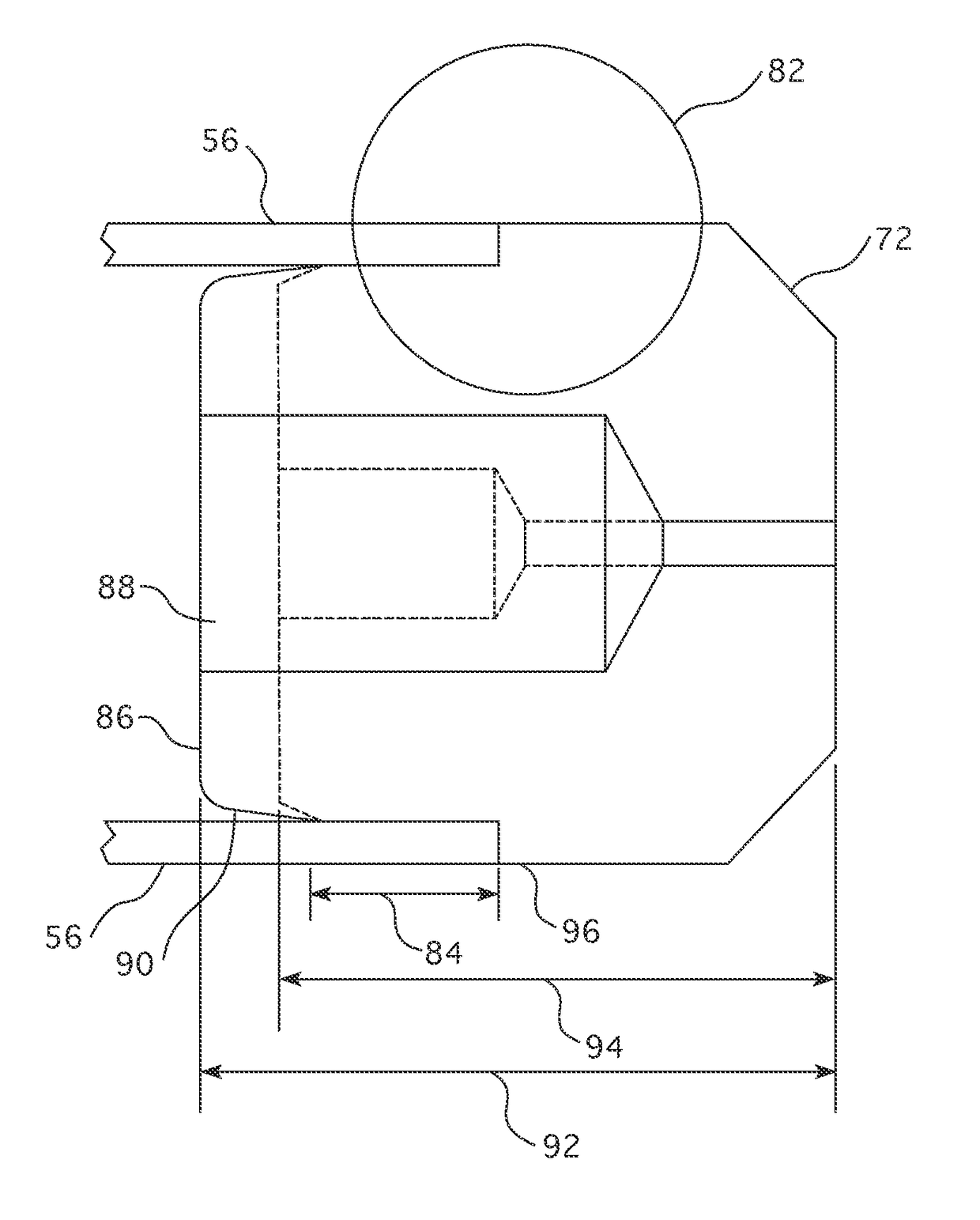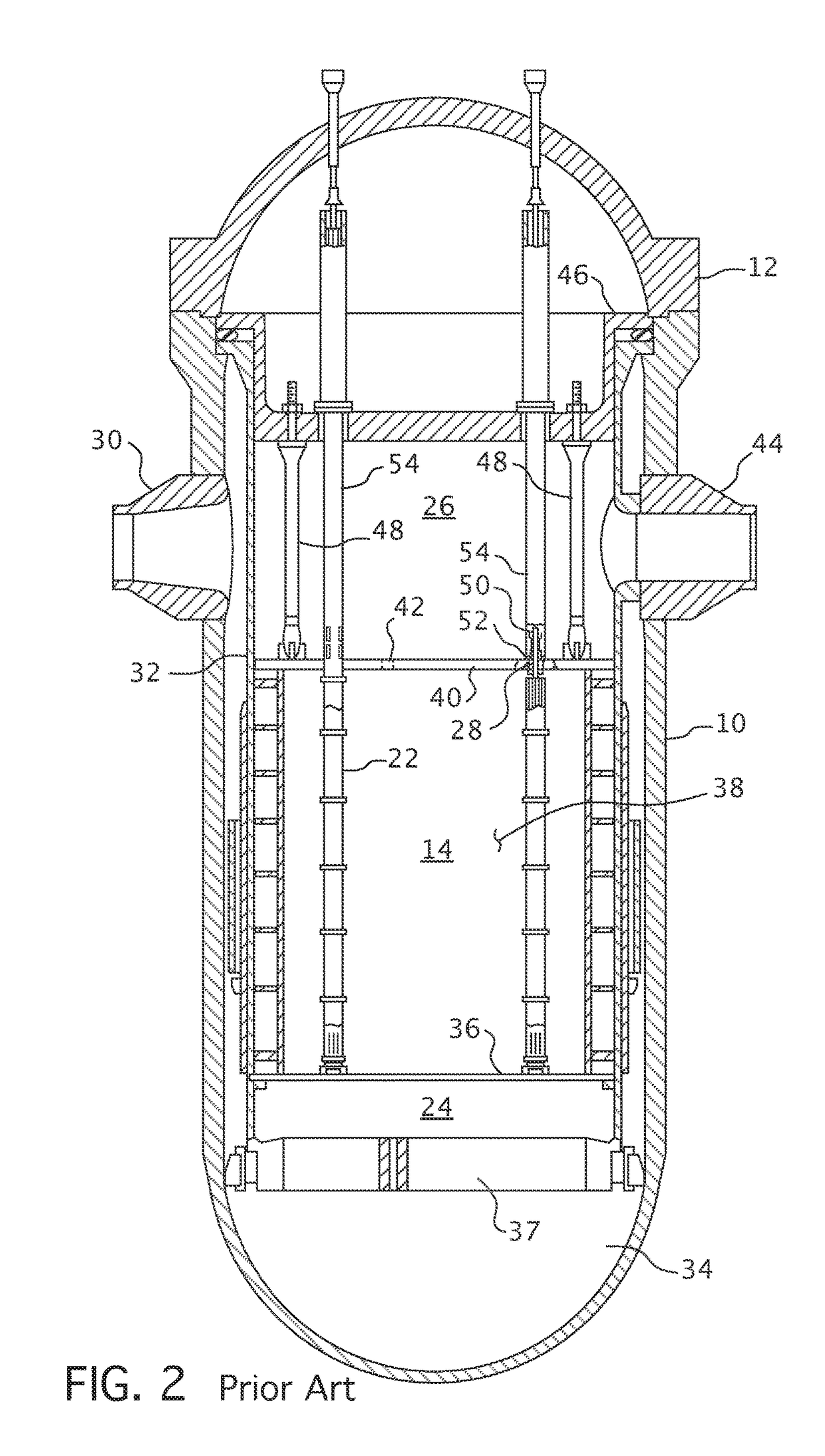Nuclear fuel element
a fuel element and nuclear technology, applied in nuclear elements, nuclear engineering, greenhouse gas reduction, etc., can solve the problems of severe vibration of the fuel rod cladding, affecting the insertion capability of control rods, and exerting significant forces on the fuel rods and the fuel assemblies, so as to avoid substantial melting
- Summary
- Abstract
- Description
- Claims
- Application Information
AI Technical Summary
Benefits of technology
Problems solved by technology
Method used
Image
Examples
Embodiment Construction
[0022]A new top end plug design in accordance with one embodiment of this invention has specific dimensions and features that give maximum fuel rod length and internal volume for high burn-up, but limits plenum spring melting for eutectic formation margin, is illustrated in FIG. 4. Deviations from a conventional top end plug are shown in dotted form. The upper end plug 72 is TIG welded to the fuel rod cladding 56 at the fuel rod to top end plug interface on the upper end of the cladding which, results in some plenum spring melting due to the high temperature inherent in the process. The region of melting of the cladding and upper end plug materials is shown by the circle designated 82 though, because of the differences in those materials and the high temperature of the welding process the portion of the spring (not shown in this Figure) that abuts the lower surface 84 of the upper end plug 72 has also experienced some melting. The conventional end plugs, which are shown in dotted fo...
PUM
 Login to View More
Login to View More Abstract
Description
Claims
Application Information
 Login to View More
Login to View More - R&D
- Intellectual Property
- Life Sciences
- Materials
- Tech Scout
- Unparalleled Data Quality
- Higher Quality Content
- 60% Fewer Hallucinations
Browse by: Latest US Patents, China's latest patents, Technical Efficacy Thesaurus, Application Domain, Technology Topic, Popular Technical Reports.
© 2025 PatSnap. All rights reserved.Legal|Privacy policy|Modern Slavery Act Transparency Statement|Sitemap|About US| Contact US: help@patsnap.com



